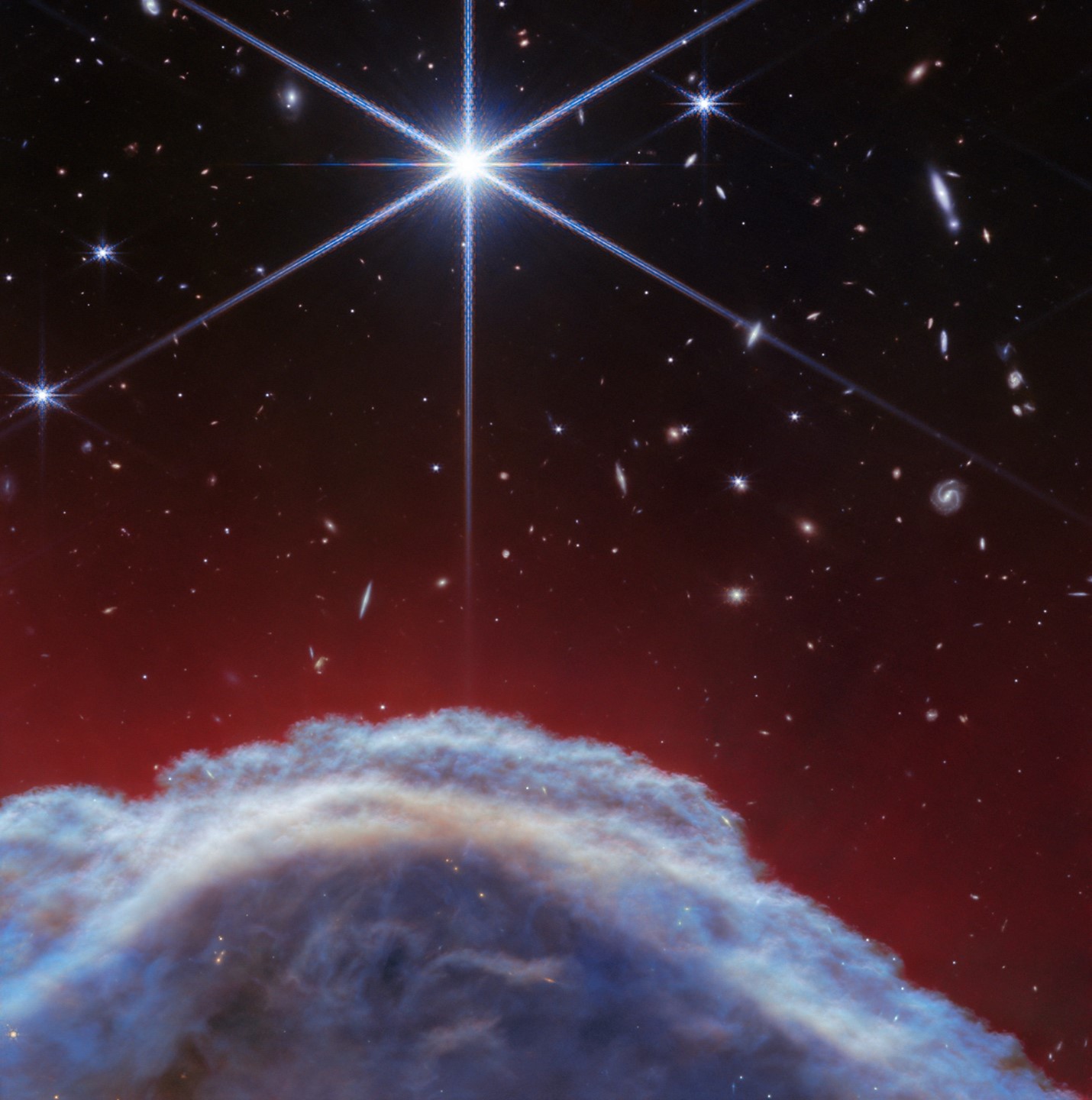NASA’s James Webb Space Telescope has recently captured incredibly detailed infrared images of a portion of the Horsehead Nebula, one of the most iconic objects in our night sky. These images offer a fresh perspective on the nebula’s intricacies, showcasing the top of its distinctive shape with unparalleled clarity.
Located in the constellation Orion, within the Orion B molecular cloud, the Horsehead Nebula stands out amidst swirling clouds of dust and gas. Approximately 1,300 light-years away, it originated from the collapse of an interstellar cloud, glowing due to nearby starlight. While the surrounding gas clouds have dispersed over time, the prominent “mane” of the Horsehead remains, composed of dense material that resists erosion. Astronomers estimate it has about five million years left before it eventually dissipates.
The Horsehead Nebula is classified as a photodissociation region (PDR), where ultraviolet light from massive young stars creates a warm environment of gas and dust. This UV radiation profoundly influences the chemistry of these regions and serves as a crucial heat source. The Horsehead’s nearly edge-on orientation makes it an ideal candidate for studying PDRs and the molecular evolution of interstellar matter.
Thanks to the advanced capabilities of Webb’s instruments, particularly MIRI and NIRCam, astronomers have unveiled intricate structures at the nebula’s illuminated edge. As UV light interacts with the dust cloud, it causes dust particles to be swept away, revealing a network of delicate features. These observations shed light on how dust interacts with light and enhance our understanding of the nebula’s complex shape.
Moving forward, astronomers plan to analyze spectroscopic data obtained from these observations to further explore the physical and chemical properties of the nebula.
This groundbreaking research, conducted under Webb’s GTO program 1192, underscores the telescope’s role as a premier space science observatory, unraveling mysteries within our solar system and beyond. As an international collaboration led by NASA, alongside partners ESA and the Canadian Space Agency, Webb continues to push the boundaries of space exploration and our understanding of the universe.















































